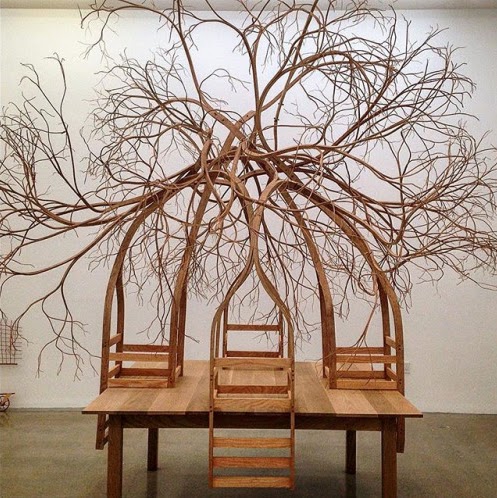Stepping into our 'standards and art making approaches' workshop last night Olivia Gude invites us to think of the new visual art standards as a discursive and potential space |
 |
| Olivia's standards presentation posted on the NAEA site |
 |
| Creating Surrealist drawings "Linger in the image, re-submerge, change the angle, no talking." |
 |
Jess' arm. This is not a Surrealist drawing but it's gorgeous to look at the contrasting lines and textures.
|
 |
| Paula drawing from the subconscious |
 |
| A gallery walk of teacher Surrealist images |
Spaces for Possibility
Art Making Approaches/Curriculum Development
prompt
With the introduction of the new CORE Art Standards there is
less of an emphasis on formal art making approaches connected to the elements
and principles. Olivia is helping us think through how to develop contemporary art curriculum
around art making approaches such as the Surrealists, Mark Dion’s anthropological,
re-enactments, kinetic movement, etc. These art making approaches invite us to step away from what is already known and familiar to us to envision art making approaches that support experimentation, and increased student autonomy.
We’re asking you this year to create curriculum that takes into consideration the following factors:
1) Identify an art making approach that you haven’t worked with before.
2) Generate concepts, values, vocabulary, open-ended questions around this art making approach. Look at the Art21 website for inspiration.
We’re asking you this year to create curriculum that takes into consideration the following factors:
1) Identify an art making approach that you haven’t worked with before.
2) Generate concepts, values, vocabulary, open-ended questions around this art making approach. Look at the Art21 website for inspiration.
3) Engagement question: What will your students do when you stop talking?
4) Create a teacher sample or pilot to share with the Spaces group mid-year for feedback, implement this new approach in the winter/spring in your classrooms. Share your final art-making approach in the spring with the whole group.
A collaged art making style - Trenton Doyle Hancock images are amassed over 15 years
 |
Trenton Doyle Hancock
The Former and the Ladder or Ascension and a Cinchin' 2012
|



